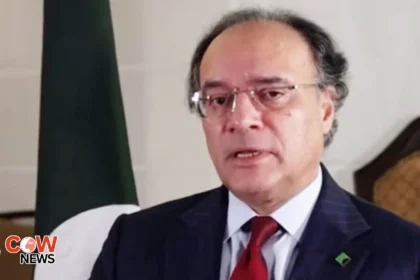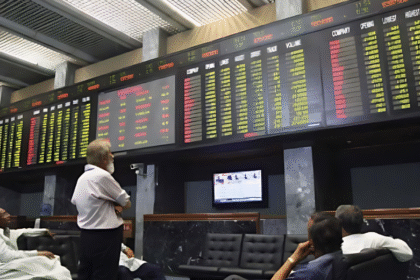Introduction
In a significant move reflecting its commitment to community safety and content regulation, TikTok has announced the removal of over 30 million videos in Pakistan. This action, aimed at upholding community guidelines and ensuring compliance with local laws, has sparked discussions about content moderation on social media platforms and the broader implications for freedom of expression. As TikTok continues to grow in popularity, the challenge of balancing user-generated content with community standards becomes increasingly critical.
Understanding TikTok’s Guidelines
TikTok, like many social media platforms, has established a set of community guidelines designed to maintain a safe and respectful environment for its users. These guidelines prohibit various types of content, including but not limited to:
Hate speech
Harassment and bullying
Adult content
Misinformation
Violence and graphic content
The platform employs a combination of automated systems and human moderators to identify and remove content that violates these guidelines. However, the sheer volume of user-generated content poses a continuous challenge for TikTok’s moderation efforts.
The Recent Removals
The decision to remove over 30 million videos in Pakistan was part of a broader initiative to enhance content safety on the platform. This move came in response to increasing scrutiny from regulatory authorities and public concern over inappropriate content that could harm users, especially minors.
The majority of the removed videos reportedly contained content that violated TikTok’s community guidelines, with many falling into categories such as hate speech and explicit content. This significant removal reflects TikTok’s proactive approach to ensure that its platform remains safe for all users.
Implications for Users
For TikTok users in Pakistan, the removal of such a vast number of videos raises several important questions and concerns:
1. Impact on Content Creators: Many content creators rely on TikTok as a platform for expression and income. The removal of millions of videos could significantly impact their visibility and engagement levels. Content creators may feel discouraged if their videos are removed or if they fear future penalties.
2. Concerns Over Censorship: While TikTok’s actions aim to create a safer environment, they also raise concerns about censorship and the subjective nature of content moderation. Users may feel that their voices are being stifled, especially if they perceive that their content is being removed unfairly.
3. User Trust: Trust is crucial in any social media platform’s ecosystem. Continuous removal of content can lead to a perception of unpredictability, making users uncertain about the types of content that will be allowed. This could potentially drive users away from the platform if they feel their content might be removed without valid reason.
Regional Context and Cultural Sensitivity
Pakistan’s cultural landscape plays a significant role in the types of content that are acceptable. With a diverse population and varying societal norms, TikTok faces the challenge of ensuring that content is appropriate for all demographics. This becomes especially critical in regions where conservative values may clash with the free-spirited nature of social media.
Moreover, TikTok’s removal of videos is reflective of broader societal attitudes towards digital content in Pakistan. As social media platforms gain prominence, the demand for more stringent content moderation increases, driven by a combination of cultural sensitivities and the necessity to protect vulnerable populations.
Regulatory Pressures
The decision to remove such a vast number of videos also stems from increasing regulatory pressures in Pakistan. Government authorities have been vocal about the need for social media companies to take responsibility for the content shared on their platforms. In recent years, Pakistan has witnessed a surge in discussions surrounding digital governance and the regulation of online spaces.
The Pakistan Telecommunication Authority (PTA) has been particularly active in enforcing regulations concerning online content, emphasizing the need for social media platforms to comply with local laws. TikTok’s recent actions can be viewed as a response to these regulatory pressures, aiming to align with the expectations of the authorities while ensuring the safety of its user base.
The Role of Artificial Intelligence in Moderation
TikTok employs sophisticated algorithms and artificial intelligence to monitor and filter content. These technologies play a vital role in identifying potentially harmful content before it is widely disseminated. However, the reliance on AI for content moderation also comes with its challenges.
1. False Positives: Algorithms may flag content that does not necessarily violate guidelines, leading to unintended removals. This can frustrate users who believe their content is misrepresented.
2. Cultural Nuances: AI systems may struggle to understand the cultural nuances of content, resulting in the removal of videos that may be culturally acceptable in one context but flagged as inappropriate in another.
3. Continuous Learning: TikTok is continuously working on refining its algorithms to better understand context and improve accuracy. The effectiveness of AI moderation is an ongoing process that requires adaptation and improvement.
The Future of Content Moderation
As TikTok continues to evolve, the future of content moderation on the platform remains a topic of great interest. The removal of over 30 million videos in Pakistan serves as a reminder of the challenges social media platforms face in navigating the complexities of content regulation. Here are some considerations for the future:
1. Greater Transparency: Users are increasingly demanding transparency from social media platforms regarding their moderation practices. TikTok may need to provide clearer guidelines on what constitutes a violation to foster trust and understanding among its user base.
2. Enhanced User Education: Educating users about community guidelines and content creation best practices could help mitigate instances of content removal. By empowering users with knowledge, TikTok can encourage responsible content sharing.
3. Community Engagement: Engaging with users and creators to understand their perspectives can lead to more effective content moderation strategies. Building a collaborative relationship between TikTok and its community may result in a more positive environment for all.
4. Implementing Advanced Technologies
As social media evolves, TikTok must invest in advanced technologies to improve its content moderation capabilities. This includes leveraging artificial intelligence and machine learning algorithms to better identify harmful content before it spreads. By analyzing patterns in user behavior and the types of content that typically violate community guidelines, TikTok can refine its moderation processes. These technologies can also help reduce false positives, ensuring that user-generated content that is appropriate is not inadvertently removed, fostering a healthier user environment.
5. Collaborative Efforts with Stakeholders
To enhance its content moderation strategy, TikTok should collaborate with various stakeholders, including government agencies, NGOs, and community organizations. By working together, these entities can provide valuable insights into local contexts and cultural sensitivities, which are crucial for effective content moderation. Collaborations can also lead to the establishment of joint initiatives aimed at educating users on responsible content sharing, ensuring that community guidelines are culturally relevant and well understood.
6. Regular Audits and Feedback Loops
Implementing regular audits of moderation practices can help TikTok assess the effectiveness of its content moderation strategies. By evaluating the outcomes of removed content and gathering feedback from users, TikTok can make informed adjustments to its guidelines and moderation practices. Creating a feedback loop allows the platform to adapt to user concerns and improve its overall approach to content moderation, leading to a more satisfactory user experience.
7. Encouraging Positive Content Creation
TikTok can take proactive steps to encourage positive content creation among its users. By promoting campaigns that highlight uplifting, educational, or socially responsible content, TikTok can create a positive environment that counteracts harmful behavior. Providing incentives for creators who adhere to community guidelines and produce quality content can also help foster a culture of responsibility. Such initiatives not only benefit the platform but also empower users to engage in constructive dialogue.
8. Future-Proofing Moderation Policies
Finally, as social media dynamics evolve, TikTok needs to future-proof its moderation policies. This involves staying ahead of emerging trends and understanding the implications of new forms of content, such as virtual reality or augmented reality experiences. By anticipating changes in user behavior and the potential risks associated with new technologies, TikTok can develop adaptive moderation policies that remain effective. A forward-thinking approach will enable the platform to maintain a safe and welcoming space for its users while encouraging creativity and expression.
TikTok’s removal of over 30 million videos in Pakistan is a significant step in the ongoing dialogue about content moderation, user safety, and freedom of expression. While the platform aims to create a safer space for its users, the implications of such actions cannot be overlooked. Balancing the need for safety with the rights of users to express themselves will remain a challenge as TikTok navigates its path forward in an increasingly complex digital landscape.
#TikTok #ContentModeration #Pakistan #SocialMedia #UserSafety #FreedomOfExpression







